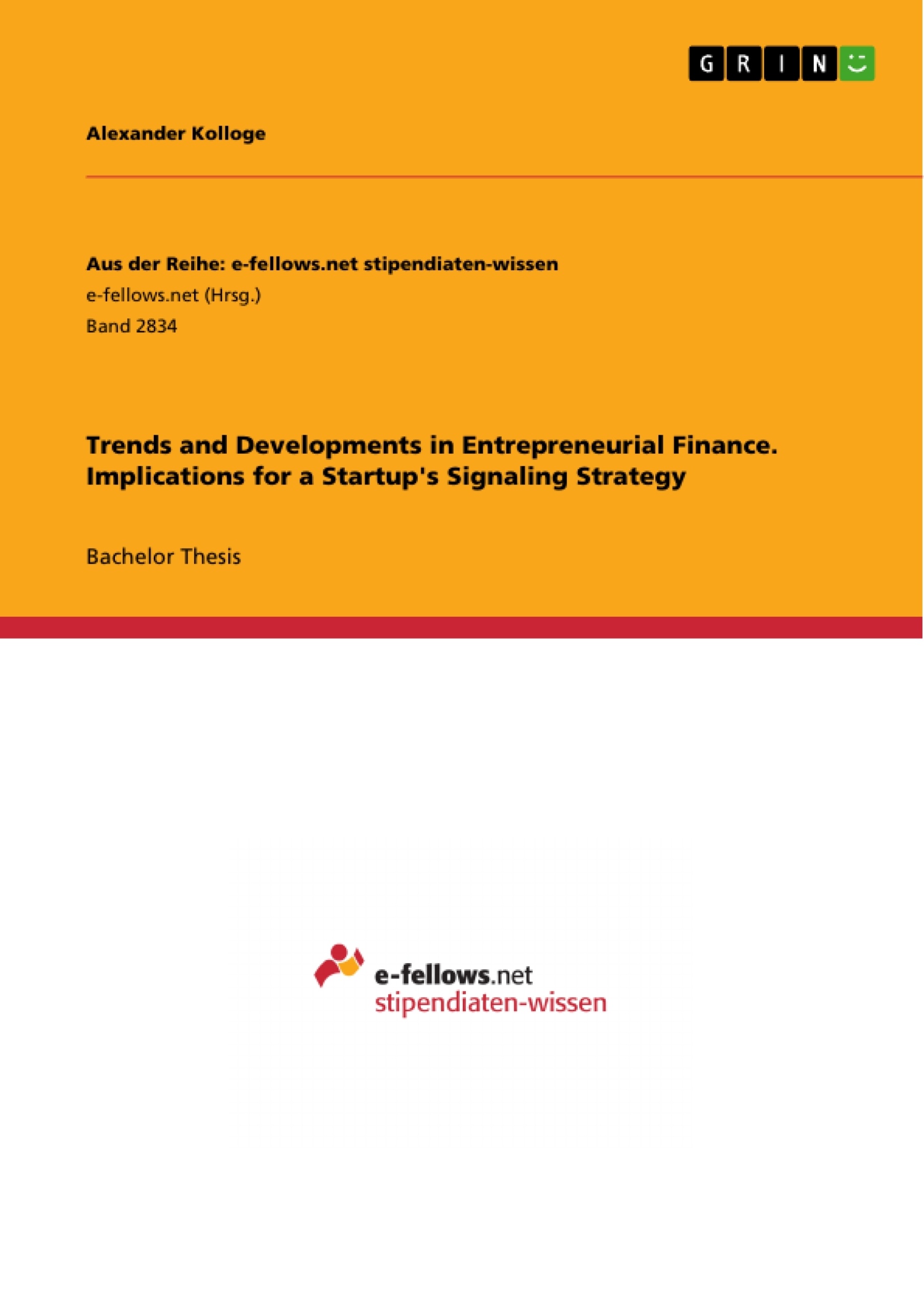The landscape of entrepreneurial finance is currently subject to a process of transformation, driven by globalization, technological advancements, regulatory adjustments, and the emergence of winner-take-all markets. These factors jointly pave the way for new forms of financing, which differ significantly from traditional forms in terms of investor structure, experience, and behavior. To analyze how startups can ensure financial coverage in the light of these changing conditions, this review compares strategies of attracting traditional and new types of investors from a signaling perspective. In business practice, this topic is highly relevant, as many young startups require substantial amounts of external capital to grow, but often have no objective firm data to provide to investors. Thus, the selection of effective “soft” signals about startup quality, preferably aligned with the preferences of the respective investor group, can decide about short-term survival and long-term performance. Findings include that the most promising signaling strategies for traditional forms of financing are based on startup characteristics, i.e. what a firm is. In contrast, the most effective signals for new forms of financing are based on startup actions, i.e. what a firm does. Moreover, while personal networks have been found to be highly relevant for traditional forms, online networks increase the funding prospects for new forms of financing. Through a consolidation and analysis of the current state of research in leading management, entrepreneurship, and finance journals, this review aims at providing a comprehensive overview of the issue and identifying avenues for future research.
Inhaltsverzeichnis (Table of Contents)
- Introduction
- Trends and Developments in Entrepreneurial Finance
- Factors Explaining the Transformation of the Finance Landscape
- Traditional and New Forms of Entrepreneurial Finance
- Implications for a Startup's Signaling Strategy
- Theoretical Foundations
- Research on Signaling Strategies based on Startup Characteristics
- Research on Signaling Strategies based on Startup Actions
- Research on Signaling Strategies based on Third-Party Endorsements
- Avenues for Future Research
- Adjusting the Research Focus
- Fostering Conceptual Development
- Promoting a Cross-Disciplinary Approach
- Conclusion
Zielsetzung und Themenschwerpunkte (Objectives and Key Themes)
This thesis aims to provide a comprehensive comparison of traditional and new forms of financing from a signaling perspective. The goal is to provide guidance for startups to develop signaling strategies in a transitioning entrepreneurial finance landscape and to help scholars identify potential research gaps and inconsistencies.
- The changing landscape of entrepreneurial finance driven by globalization, technological advancements, and regulatory adjustments.
- The emergence of new forms of financing and their differences from traditional forms.
- The effectiveness of signaling strategies based on startup characteristics, startup actions, and third-party endorsements in attracting traditional and new investors.
- The importance of signaling strategies for startups, especially in early funding stages.
- Avenues for future research on signaling strategies in entrepreneurial finance.
Zusammenfassung der Kapitel (Chapter Summaries)
- Introduction: This chapter introduces the topic of entrepreneurial finance in a changing landscape and highlights the importance of signaling strategies for startups in attracting investors. It discusses the limitations of existing research on signaling strategies and outlines the objectives and structure of the thesis.
- Trends and Developments in Entrepreneurial Finance: This chapter explores the factors driving the transformation of the entrepreneurial finance landscape, including globalization, technological advancements, regulatory adjustments, and the rise of winner-take-all markets. It examines the emergence of new forms of financing and compares them to traditional forms.
- Implications for a Startup's Signaling Strategy: This chapter provides a theoretical foundation for signaling strategies in entrepreneurial finance and examines research on signaling strategies based on startup characteristics, startup actions, and third-party endorsements. It analyzes the effectiveness of these strategies in attracting traditional and new investors.
- Avenues for Future Research: This chapter outlines potential avenues for future research on signaling strategies in entrepreneurial finance, including adjusting the research focus, fostering conceptual development, and promoting a cross-disciplinary approach.
Schlüsselwörter (Keywords)
This thesis explores the key themes of entrepreneurial finance, signaling strategies, startup characteristics, startup actions, third-party endorsements, traditional and new forms of financing, and the changing landscape of entrepreneurial finance. It examines research findings on the effectiveness of different signaling strategies in attracting investors in a dynamic environment.
- Quote paper
- Alexander Kolloge (Author), 2018, Trends and Developments in Entrepreneurial Finance. Implications for a Startup's Signaling Strategy, Munich, GRIN Verlag, https://www.grin.com/document/440912



